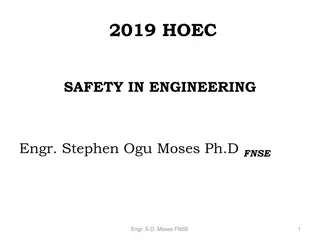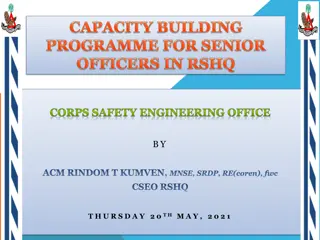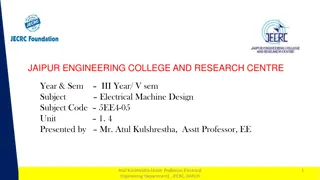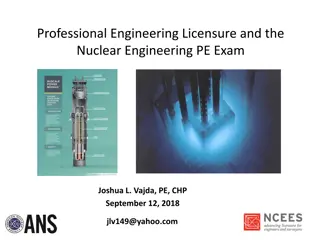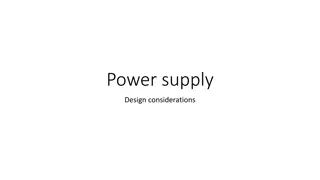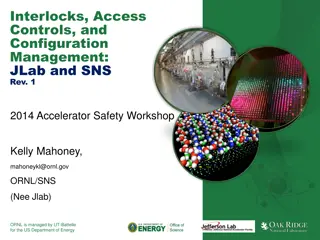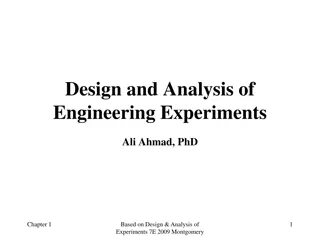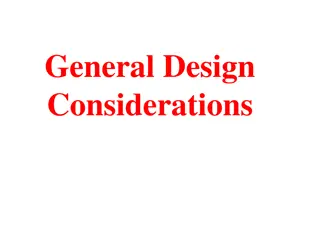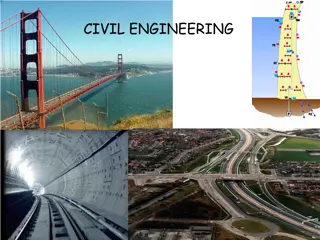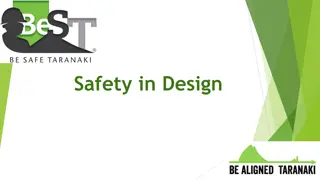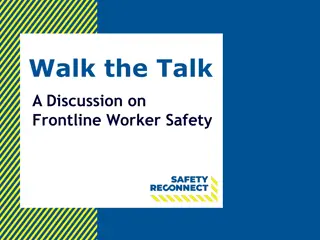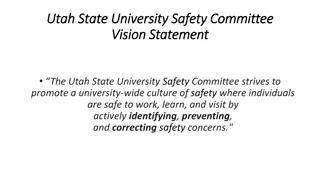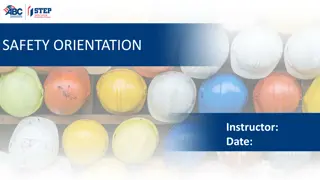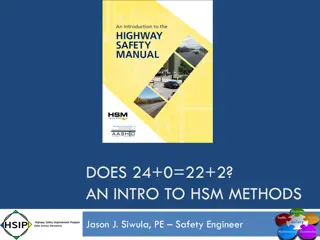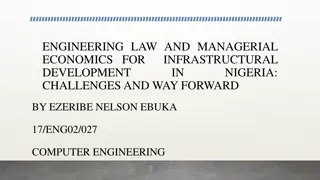Safety Considerations in Design and Engineering
Designers have a crucial duty to ensure health and safety in the design, manufacture, and supply of structures, substances, and systems for work. Key considerations include identifying process hazards, applying control measures, and implementing strategies such as elimination, substitution, and engineering controls to mitigate risks effectively.
Download Presentation

Please find below an Image/Link to download the presentation.
The content on the website is provided AS IS for your information and personal use only. It may not be sold, licensed, or shared on other websites without obtaining consent from the author. Download presentation by click this link. If you encounter any issues during the download, it is possible that the publisher has removed the file from their server.
E N D
Presentation Transcript
Designers Duties under HSWA 2015 You have a duty to consider health and safety when you: design, manufacture, import, or supply plant, substances or structures for work install, build, or commission plant, substances or structures for work. This duty helps ensure the plant, substances or structures will not negatively affect the health and safety of the people who use, handle, construct, store, maintain, and/or repair the plant, substances or structures.
Three Important considerations for Designers 1. Common sources of major process hazards 2. Basic techniques used to identify and analyze process hazards 3. The hierarchy of process design solutions used to mitigate hazards
Processes when Designing Process Hazards energy sources Basic identification and analyses techniques Hierarchy of controls (preventative) Hierarchy of controls (mitigative)
Elimination Develop structural arrangements that are inherently safe, for example: Eliminate confined spaces Minimise heavy components hanging from ceilings (e.g. heavy HVAC systems) Site structures above flood levels Provide safe access to roofs and exterior surfaces for maintenance Eliminate hazardous substances on site if possible Use low temperature, low pressure equipment instead of high temperature, high pressure equipment
Substitution Replace a hazardous process or material with one that is less hazardous to reduce the risk. For example: use pre-cast panels rather than constructing a masonry wall Use non-flammable material instead of flammable material Use a non-toxic material instead of a toxic material
Engineering Controls Use engineering control measures to minimize the risk, for example: Include adequate ventilation and lighting in the design Designing and positioning permanent anchorage and hosting points into building for cleaning (windows) Minimize inventory of hazardous material Separate the hazard or hazardous work practice from people, for example: Ensure noisy machinery is isolated from workstations Designing the layout of a building so that fires cannot spread across zone boundaries Barricading of perimeter and access control
Administrative Controls If engineering controls cannot reduce the risk sufficiently, then administrative controls should be used, for example: Using warning signs or exclusion zones where a hazardous activity is carried out Procedures, forms, etc. Training of personnel
Personal Protective Equipment Personal Protective Equipment (PPE) should be used to protect the worker from any residual risk, for example: Hard hats Repository protection Ear muffs Breathing apparatus for vessel entry Etc.
Design Risk Assessment Design Risk assessments need to show consideration of the following: Safe to construct. Safe to operate. Safe to maintain/clean. Safe to decommission.
BeSafe presentations that can help in this area https://besafe.nz/machine-guarding-presentations/ https://besafe.nz/changes-with-workplace-exposure- standards/ https://besafe.nz/risk-normalisation/


